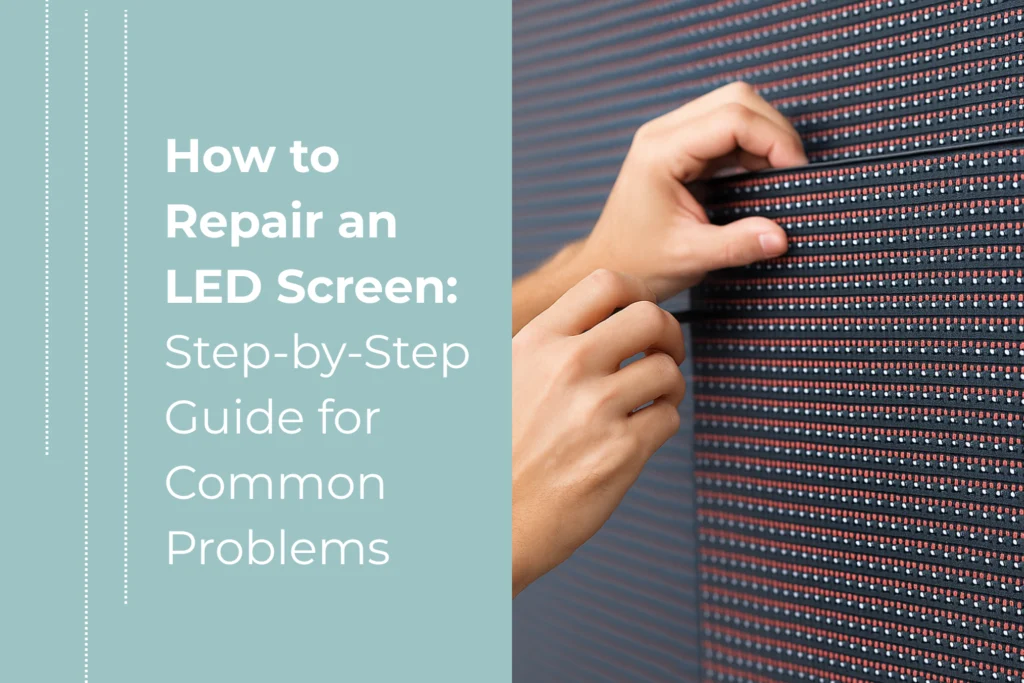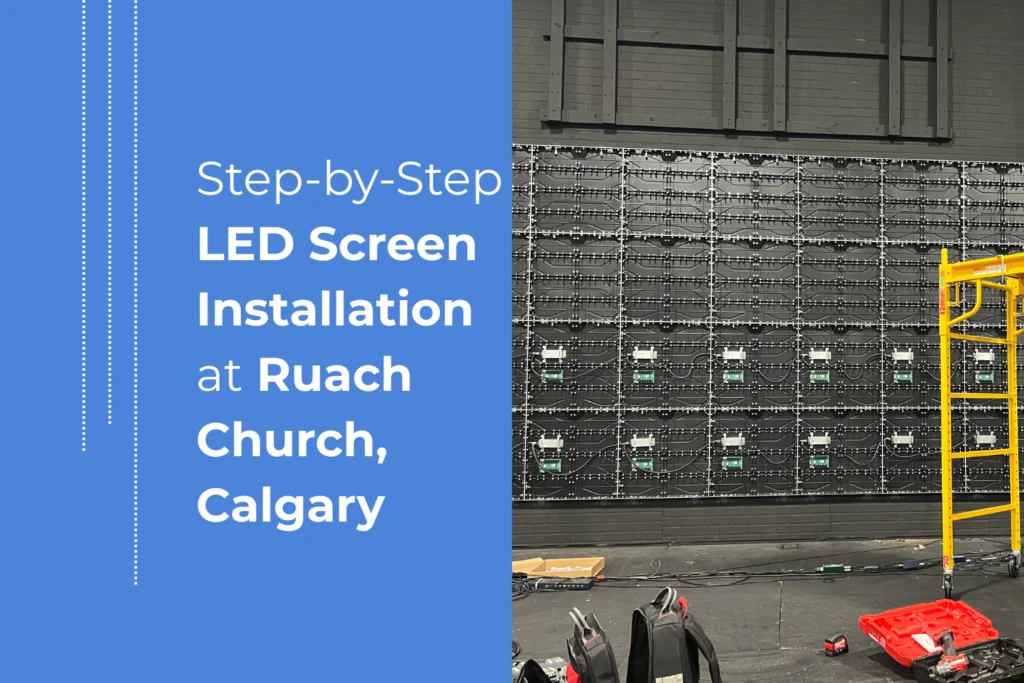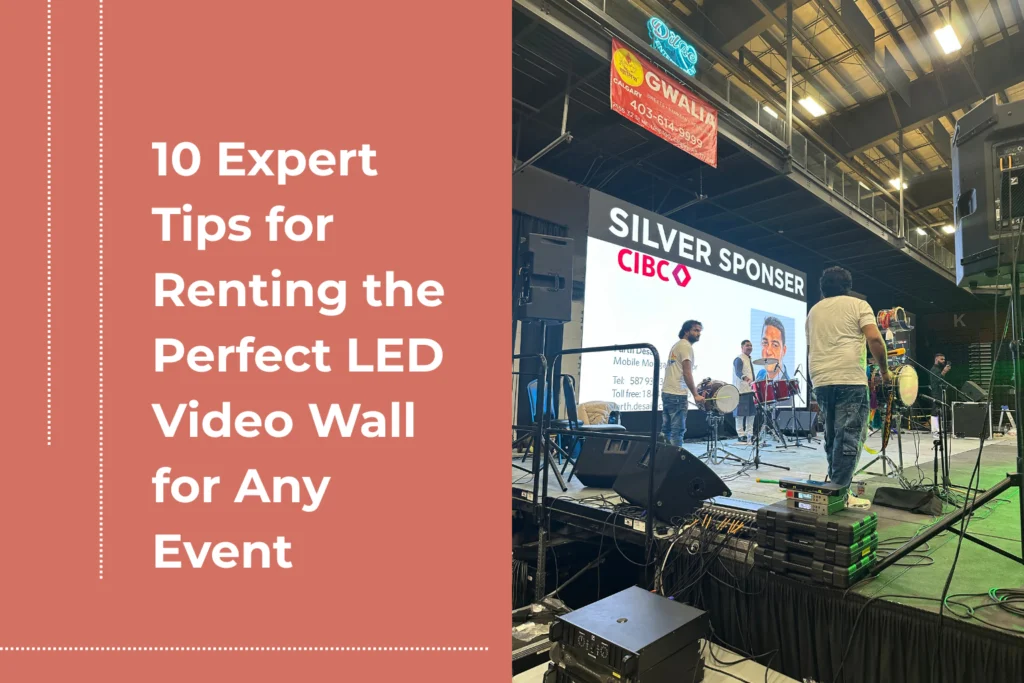What is an LED Wall?
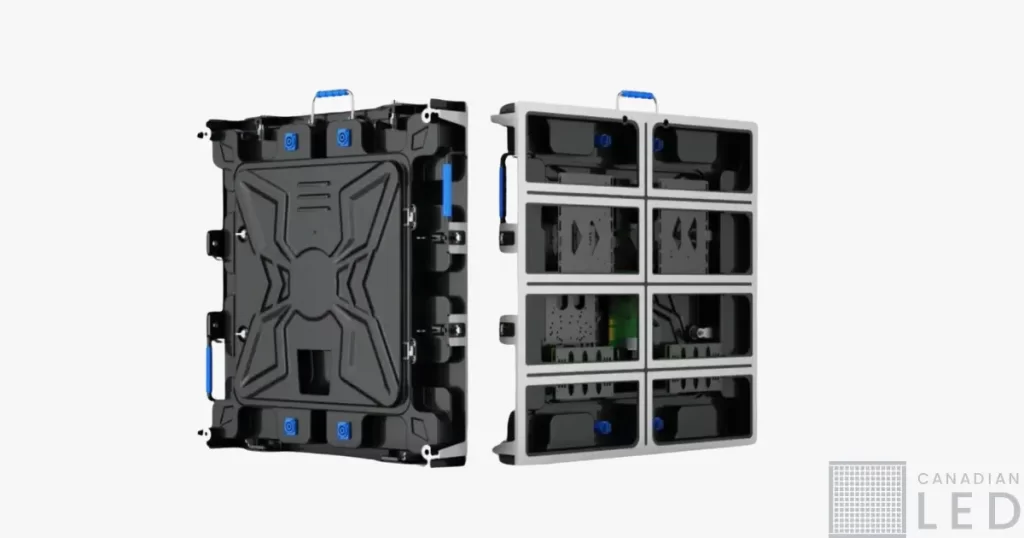 An LED wall is a large, high-resolution display made up of individual LED panels that work together to create a seamless screen. Unlike traditional projector setups or LCD video walls (which have visible bezels between screens), LED walls are modular, meaning they can be customized to any size or shape without compromising image quality. You’ve likely seen them at concerts, trade shows, retail stores, or even churches. They’re incredibly versatile and can be used both indoors and outdoors, handling bright sunlight without washing out like a traditional projector screen.
An LED wall is a large, high-resolution display made up of individual LED panels that work together to create a seamless screen. Unlike traditional projector setups or LCD video walls (which have visible bezels between screens), LED walls are modular, meaning they can be customized to any size or shape without compromising image quality. You’ve likely seen them at concerts, trade shows, retail stores, or even churches. They’re incredibly versatile and can be used both indoors and outdoors, handling bright sunlight without washing out like a traditional projector screen.How an LED Wall Differs from a TV or LCD Screen
A common misconception is that an LED wall is just a giant TV. Not quite! Here’s the difference:- LED Walls use individual LED diodes to produce their own light, creating stunning brightness and contrast.
- LCD Screens (like TVs) use a backlight to illuminate pixels, which limits brightness and contrast.
- Projectors need a dark environment and a projection surface, making them less versatile in bright areas.
How LED Walls Work
The Building Blocks: LED Panels & Modules
At their core, LED walls are built using small LED modules, which are connected to form larger LED panels. These panels then fit together to create a seamless screen. Each module contains thousands of tiny LEDs that light up in different colors to produce an image. The sharpness of an LED wall depends on pixel pitch, which is the distance between LEDs on a panel. A smaller pixel pitch means higher resolution and better clarity, while a larger pixel pitch is more cost-effective for displays viewed from farther away (like billboards).How Content is Displayed
For an LED wall to function, it needs a control system that processes video content and tells the LEDs what to display. This system typically includes:- Media Player – Think of it as the brain, playing videos, images, or live feeds.
- LED Controller – Converts media signals into instructions for the LED modules.
- Video Processor – Ensures everything runs smoothly, adjusting resolution and color balance.
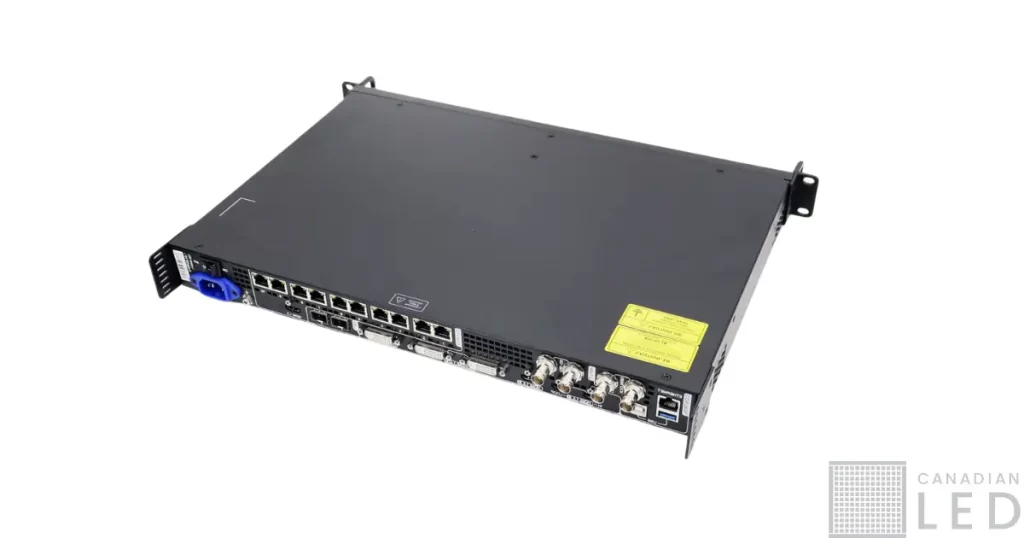 The beauty of this system is that it can display anything—from live sports to interactive marketing content—at an incredible scale and quality.
The beauty of this system is that it can display anything—from live sports to interactive marketing content—at an incredible scale and quality.Types of LED Walls
Not all LED walls are created equal! Here are the main types:Indoor vs. Outdoor LED Walls
- Indoor LED Walls – Designed for conference halls, retail stores, and corporate events. They have higher resolution (smaller pixel pitch) and lower brightness since they don’t need to compete with sunlight.
- Outdoor LED Walls – Built for stadiums, concerts, and billboards. They’re weatherproof, ultra-bright, and have a larger pixel pitch to ensure visibility from long distances.
Fixed vs. Rental LED Walls
- Fixed LED Walls – Permanent installations in places like sports arenas, shopping malls, and airports.
- Rental LED Walls – Portable, quick to assemble, and often used for events and trade shows.
Why Use an LED Wall? (Advantages & Considerations)
Advantages
- No Bezels, Just Seamless Images – Unlike LCD video walls, LED walls have no visible gaps between screens.
- High Brightness & Contrast – Perfect for outdoor and well-lit environments.
- Long Lifespan – High-quality LED walls last 60,000-100,000 hours before needing major maintenance.
- Customizable Size & Shape – From massive concert backdrops to curved walls, anything is possible.
- Energy Efficiency – Compared to traditional LCDs and projectors, LEDs consume less power per square meter.
Things to Consider
- Cost – LED walls have a higher upfront cost than projectors or LCDs, but they offer superior longevity and quality.
- Installation & Maintenance – Proper setup requires technical expertise to ensure seamless calibration and content delivery.
Choosing the Right LED Wall
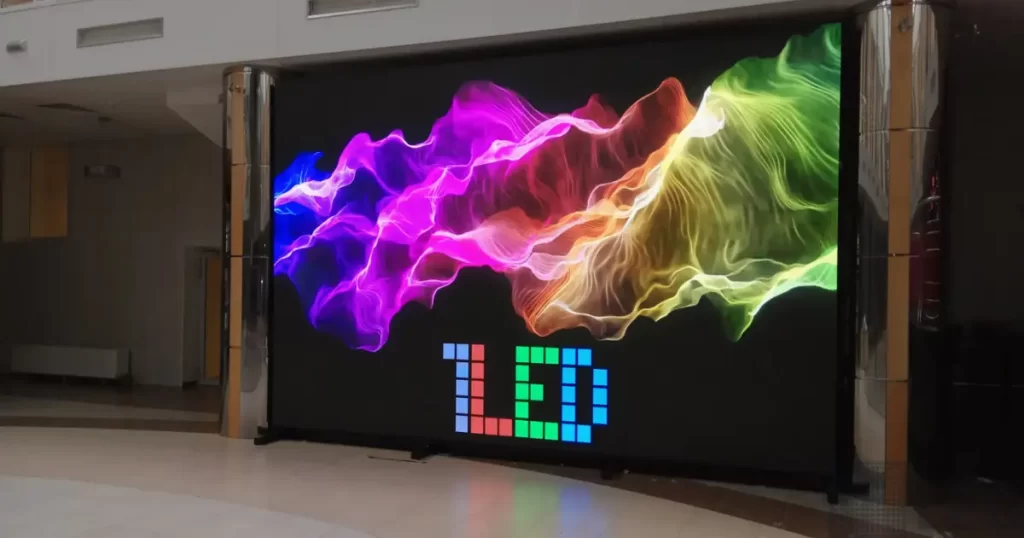 If you’re considering an LED wall for your business or event, here’s what you should think about:
If you’re considering an LED wall for your business or event, here’s what you should think about:- Purpose – Are you using it for advertising, live events, or a permanent installation?
- Viewing Distance – A closer audience needs a smaller pixel pitch for better clarity.
- Budget – LED walls are an investment, but costs can vary based on size and resolution.
Installation & Maintenance
Installation Process
Setting up an LED wall isn’t just about putting panels together—it requires:- Structural Mounting – Making sure the framework is stable.
- Power & Data Connection – Running cables and setting up controllers.
- Calibration – Adjusting brightness, color balance, and synchronization.
Maintenance Tips
- Keep It Clean – Dust and dirt can affect brightness. Use soft, dry cloths, not water.
- Check for Dead Pixels – LED panels can sometimes fail. Swapping out a bad panel is easy with modular designs.
- Update Software Regularly – Ensures smooth content playback and proper color calibration.

